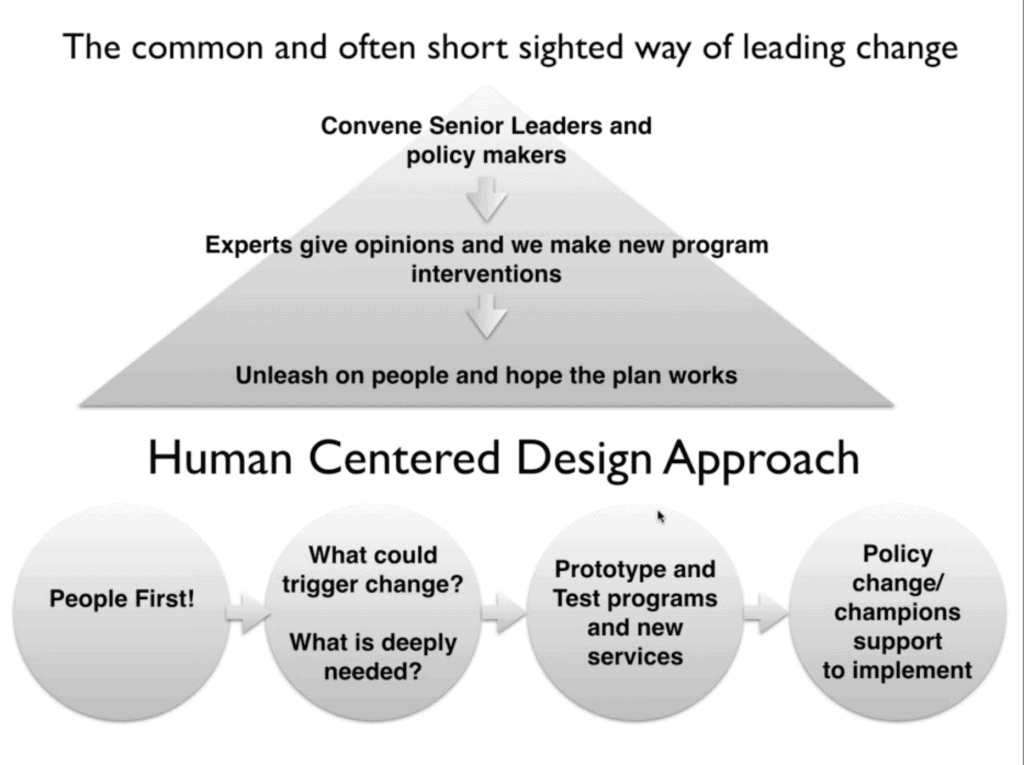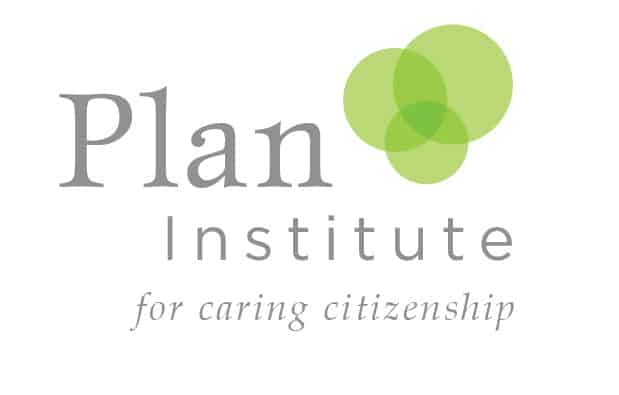After the Impact-Ability Webinar last week with Ben Weinlick, one of the participants asked a really interesting question to which Ben sent back a thoughtful response.
One of the big challenges with human centered design innovations is once you’ve got a well working prototype, how do you sell it to policy makers/funders? It’s the last bubble on the Human Centered Design approach diagram (see below) where things sometimes get stuck. Do you have any tips on how to convey things to policy makers/funders and other stakeholders who are unfamiliar with the process?
When we are trying to make progress on a complex social challenge through a Systems Thinking and Human Centered Design approach, we need empathy(insight) from all stakeholders in the system. Too often, short sighted lab approaches only focus on “user”/ people insights and needs, when you also need insight from the multiple players in the system. This certainly doesn’t mean that systems are doing everything right, but a healthy lab needs to learn from the needs, hopes, constraints of the larger systems as well as people affected in order to make progress.
For example, to make progress on humanizing case management and planning experience which became MyCompass Planning from over five years of R&D (Research & Design), our team had to learn from and gain insight from people with disabilities (“users” of services and systems), family members, service providers, front line supports, government policy makers and civil servants monitoring how service providers receive funding.
The above is a “setting the table” approach and is often hard to wrap our heads around if like me people in disability services come from a grassroots social justice and advocacy approach as “the way” to make positive change and policy shifts. A social justice approach I’ve found is for sure appropriate at times of gross injustice. The social justice approach focuses more on empathy for people’s needs, and often the oppression coming systems keeping people from having good lives. However, when everyone in a system thinks they are doing the right thing to help people’s quality of life, and the stakeholders disagree on that, things get more complex, less black and white. A fire and brimstone social justice approach at this point often isn’t the right approach to make change.
So, how then might we get people to buy into system, service and policy innovation prototypes at a policy level? Well, there aren’t silver bullets here, but something that can help is to bring along policy shapers, system gatekeepers, and people who have their hands on levers in the systems. Bring them into your lab from the beginning, and be genuinely open to learning from every stakeholder in the system, listen to the needs, frustrations, and hopes. Map it all and learn together.
In a lab we are stewarding called the Edmonton Shift Lab, we have four main stakeholder groups who are part of the lab. In a couple of the groups, policy shapers and people with hands on levers in a system are along for the ride. We just had our first lab session with the lab advisory and we explained why we are using our methodology, why we don’t have certainties, and how we will be using developmental evaluation along the way. The advisors in the Shift Lab do not govern the lab but open up doors for the lab and will help with service, policy and movement prototypes as they emerge. You can learn more here.
Best of luck!
Ben

This was a question from the Impact-Ability Webinar Series. Join us for the next one on November 29: Mobilize Your Economic Power.
